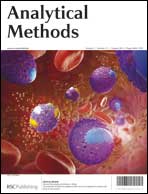The evolution of selective analyses of HDL and LDL cholesterol in clinical and point of care testing
Abstract
Cardiovascular disease is a leading cause of death worldwide and is caused by the build up of atherosclerotic plaques in the vasculature. It is now well established that the formation of these plaques is closely related to levels of both high density lipoprotein (HDL) and low density lipoprotein (LDL) cholesterol. Thus, the importance of the effective measurement of these is critical for the improved diagnosis and management of atherosclerosis. This review discusses the emergence of methodologies for the selective determination of both LDL and HDL cholesterol. It begins with an explanation of the first methodologies based on ultracentrifugation and precipitation techniques, the development of reference methods, through to the emergence of methodologies suitable for routine laboratory use, followed by the development of professional use, point of care technologies. Finally, the current status of selective tests for cholesterol based on biosensor methodologies is reviewed and the potential for application in consumer diagnostics is discussed.


 Please wait while we load your content...
Please wait while we load your content...